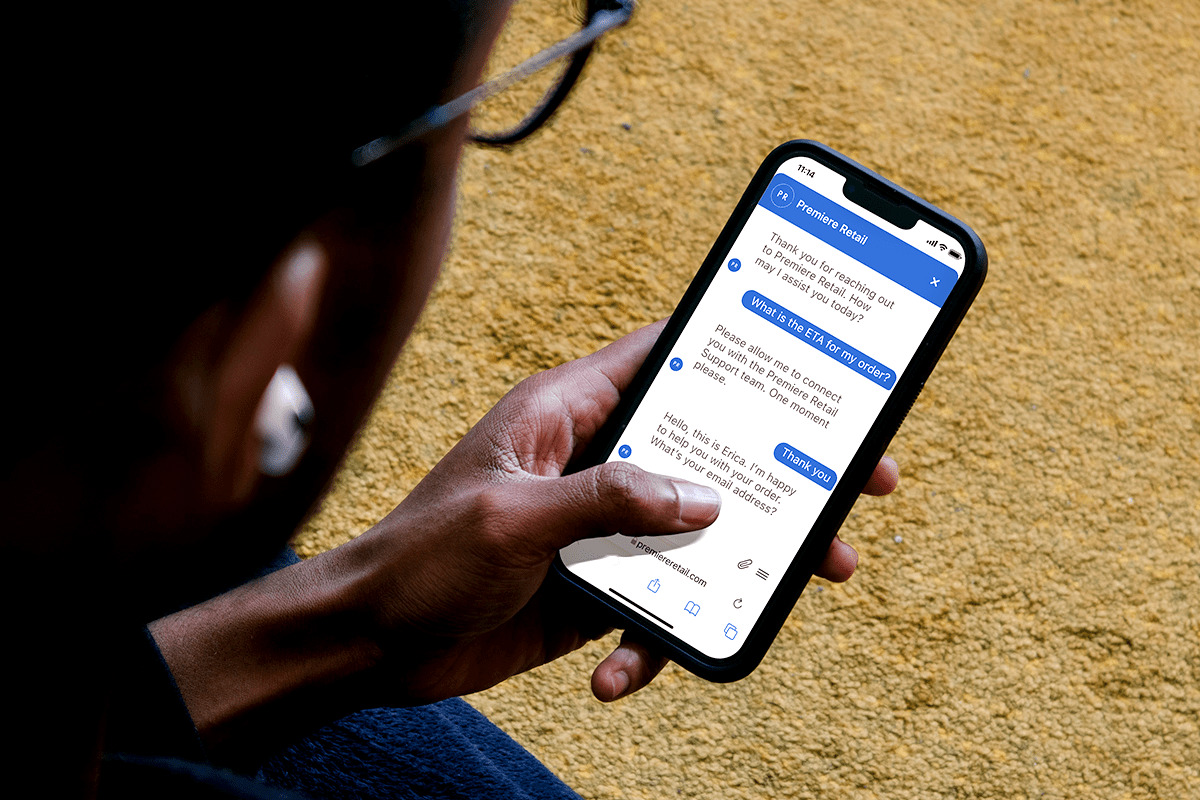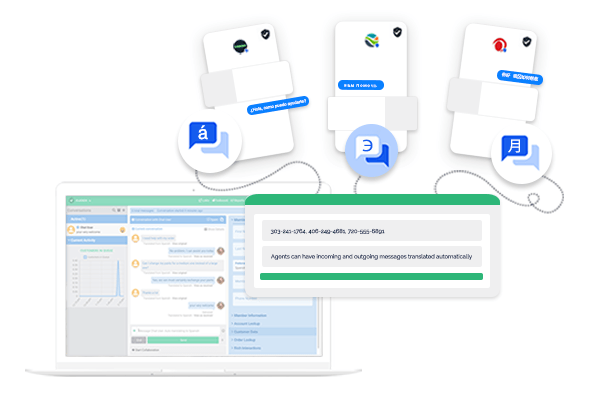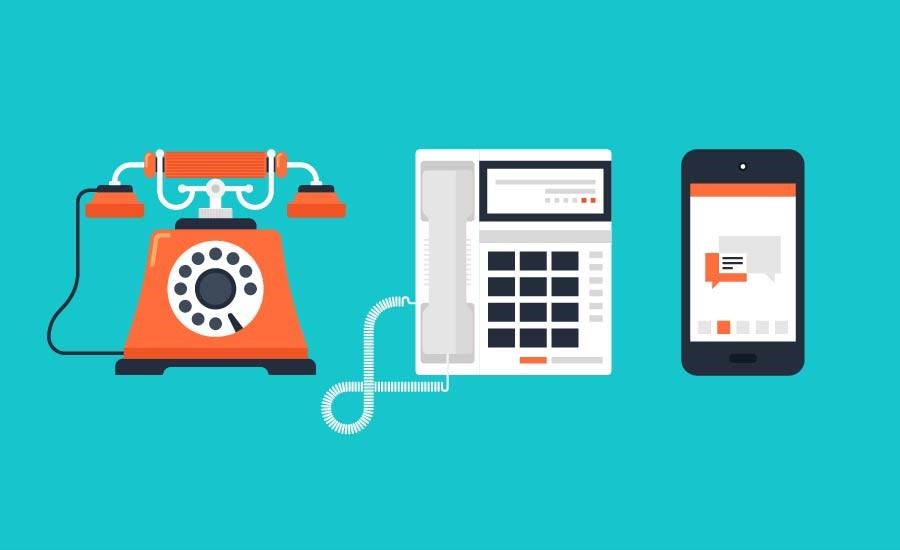What do customers want from your e-commerce business? Did you think of products first?
That’s a good guess but think again.
Do you buy from Amazon because you’re getting the best products? Probably not. It’s more about how easy it is to find and buy what you want, how quickly you get it, and how easy it is to make returns. More than individual products, they’re selling an experience.
In Salesforce’s State of the Connected Customer, 88% of consumers say the experience a company provides is as important as its product or service.
The customer experience drives success, especially in a digital-first world. Yes, this includes your products, but it’s also about engaging with your customers, streamlining purchases, and getting ahead of issues before they happen.
Let’s explore what your e-commerce experience encompasses, and discuss tips to improve e-commerce customer service.
The elements of e-commerce customer service.
E-commerce businesses face a unique challenge. (And at this point, who isn’t running their business online?) You have to create connections and build your entire customer service strategy online without frequent face-to-face interactions.
At the same time, customer expectations are increasing. Customers expect businesses to understand their unique needs and expectations (73%) and anticipate their needs (62%). They also want to connect with brands emotionally (62%). Those are much taller orders for online businesses of the past.
Before we jump into e-commerce customer service tips, let’s take a look at the elements that go into it.
Solve customers’ problems.
A key part of your customer service strategy involves attending to customer issues. Speed, convenience, and clarity are important factors.
But that’s where many businesses’ customer service plans stop. While resolution must be the pillar of your strategy, it’s just the beginning.
Help customers make purchase decisions.
Upselling and cross-selling are important customer service functions, but your team should also be available at key points in the purchase process.
If customers view your sizing guide, program a chatbot to start a conversation using web chat (also known as live chat). Suggest accessories to go with their new computer when they view the cart. Assisting with and validating your customers’ decisions will help increase revenue and add value to their interactions.
Build customer loyalty.
Digital transformation has accelerated over the last few years. Now, customers interact with businesses more online than they do in person. Salesforce reports that 60% of customer interactions now happen online.
With more online competition, it takes more to stand out—but you can with customer service. In fact, 90% of consumers say customer service is important to their choice of and loyalty to a brand, reports Microsoft.
5 tips to improve e-commerce customer service.
Online shoppers want instant replies and easy answers. E-tailers catering to their customers in these ways will benefit from consistently refining their service, sales, and marketing communication strategies. Five common ways to improve e-commerce customer service include using the following communication channels and automation.
1. Engage with customers at their convenience.
The biggest problem with phone conversations (of any kind, but it stands out with the ones you don’t want to have) is that it requires nearly your entire focus. There’s no going about your day engaging in other conversations, and there’s very little room for multitasking.
That’s why messaging has become so popular. In today’s fast-paced world, your customers need flexible communications. They need asynchronous messaging.
Asynchronous messaging doesn’t require both people to be present at the same time to have a conversation. Whereas phone calls and live chat typically require the attention of both parties to have a conversation, asynchronous messaging, like SMS/texting, doesn’t. Your customers get their questions answered, and your customer service agents can manage multiple conversations at once.
Provide asynchronous service with text messaging:
Text messaging for customer service is fast and convenient, making it easy for e-commerce companies to connect with customers. This shopper-friendly channel allows consumers to be on-the-go while getting answers to product questions, order information, or processing returns.
An asynchronous conversation like SMS/texting enables e-commerce businesses to move at the speed and cadence of their customers, creating a convenient and modern online shopping experience.
2. Offer on-demand support through the customer journey.
Admittedly, you lose something when shopping online instead of at a brick-and-mortar store. Customer service is (generally) readily available when you shop in person, and online shopping can feel impersonal when done wrong.
Customers on your website may have many options for finding answers, like an FAQ page, sending an email, or calling. Yet e-commerce customer service is at its best when it recreates the feeling of shopping at a small boutique. It takes quick, easily accessible customer service to do that.
Create on-demand support with web chat.
Web chat gives e-commerce businesses fast and easy ways to connect with customers at multiple points in the buying journey.
Typically presented in the lower right corner of your website, web chat lets customers connect instantly with your customer service team (or an AI-powered chatbot) whenever they need assistance.
Give your customers the fast service they expect, especially at critical junctures. Being available to answer questions when they’re adding items to the cart or completing a purchase can help close sales. Without web chat, customers may save their purchase for another day or find what they are looking for elsewhere altogether.
Web chat is a critical part of any e-commerce website to ensure customers are helped at every point in the customer journey, from product recommendations to purchase confirmations or follow-up questions.
3. Be where conversations are happening.
While “owned” forms of communication (like web chat, email, and phone support) are critical, waiting for customers to come to you is no longer enough. Wherever your brand has a presence, you should be prepared to offer the same service on your social media channels that customers expect directly from your website. To them, it’s essentially the same thing.
But more than that, being available where your customers are can actually boost revenue. According to Zendesk’s CX Trends Report, 93% of customers will spend more with companies that offer their preferred method to reach customer service (for example, web chat or text messaging). So extending your customer service reach across multiple channels is good for your customer satisfaction and your bottom line.
Do it with social media.
Engage with your customers across social media platforms to build advocacy and highlight your brand in the broader marketplace. These platforms offer more opportunities to connect with consumers in direct messages to answer questions and be a part of the conversation.
Before diving into multiple social media platforms, identify where your customers hang out the most.
Facebook remains the most used social media platform among US adults (69%), according to the Pew Research Center, with the following platforms coming somewhere in the middle.
But remember, numbers differ drastically depending on age. For example, 71% of 18 to 29-year-olds report using Instagram and 70% use Facebook. Pick the platforms that will have the biggest impact and provide the same level of customer service you do on your e-commerce site.
4. Provide proactive customer service.
The best kind of customer service? The kind that actually prevents problems before they happen. Right now, only 64% of customers say that B2C companies meet their needs and expectations, according to Salesforce’s State of the Connected Customer report. Proactive customer service helps build trust and makes your customers feel supported and willing to purchase from you again.
If you’re looking to build trust (and increase sales as a result), proactive customer service is the way to do it. Two of the top 5 actions that build trust are to resolve issues proactively (#4) and to communicate proactively (#5), according to Salesforce. And you can do it with outbound messaging.
Embrace outbound messaging.
Online retailers reap huge rewards by keeping their customers in the know. A prime example is order status. You can eliminate a large number of customer service questions by proactively including tracking links and status updates for every shipped item.
Outbound text messaging is an incredibly effective way to communicate with consumers. Text messages have much higher read rates than other forms of written communication (like emails). It also allows you to provide personalized coupon codes, upcoming sales, or restock notifications.
The best solutions don’t stop at just sending outbound messages. Businesses should also enable 2-way conversations so consumers can respond and have agents or bots standing by to help answer any questions.
5. Provide always-on service.
Since customers can now order at all times of the day, they also expect the same from your customer service. While you can’t ask your support team to always be at the ready, you can ask that from chatbots.
Turn to chatbots—they never sleep.
Chatbots are truly revolutionizing e-commerce to encourage more sales and are becoming a key part of customer service strategies to improve customer satisfaction.
According to Zendesk, 47% of US consumers believe AI (like the kind used in chatbots) should improve customer service quality. Chatbots are always available to answer pre- or post-sales questions, assist shoppers with their selections, provide order and shipping information, and answer common questions. From quick answers to always-on responsiveness to AI-enhanced suggestions, chatbots can help satisfy customers and improve revenue.
But chatbots don’t just increase your revenue—they also help your bottom line. Retailers and e-commerce companies are increasingly leaning on the efficiency and cost savings that chatbots provide.
Chatbots help your customer service team move faster. They’re becoming increasingly useful for companies with high traffic volumes, speeding up response times, resolving common problems, and even conducting customer surveys. They can also perform critical tasks, like assisting agents and routing the most high-value conversations to the front of the line.
Make your customer service stand out with Quiq.
For e-commerce businesses, customer service is more important than ever. Standing out in a crowded online space is difficult, but it’s possible with the right strategies and tools.
Now that you know how to improve online customer service, it’s time to take action. You can improve e-commerce customer service for your business in a number of ways, from implementing business messaging software to including automation with bots in your customer service strategy. Whatever your company’s goals, Quiq is here to help you create the ultimate online customer service strategy.




